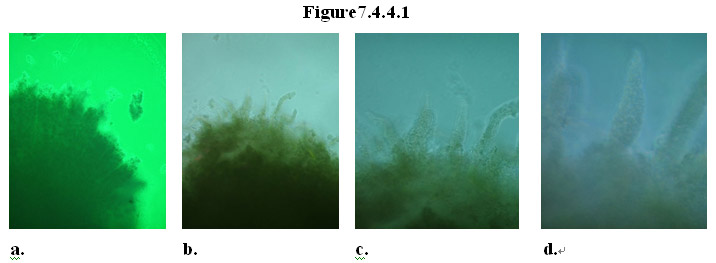4. Regeneration of Excised Gastrointestinal Villi in GI Tissue Explants
To further test the ability of the MEBO regenerative nutrients to facilitate cloning of physiologically correct tissue in vitro, experiments were conducted on explants of mouse intestine. Explants of mouse intestine were obtained and a few villi on the explants were excised and cultured in normal cell culture medium. The cultured explants were divided into two groups: test group and control group. The MEBO regenerative nutrients were added to the cultures in the test group, while the control group did not receive any supplement.
As shown in the panels in Figure7.4.4.1a-d, in the treatment group the explants not only survived but also grew new villi from the wound where the original villi had been removed. By day 6, nascent structure of villus started to appear on the wound, and by day 8 regeneration of multiple new villi with the same physiological structure as the original ones was complete. By contrast, explants in the control group gradually disintegrated and died in the culture (Figure7.4.4.2a-d).
So far our extensive literature search has not found reports of such results of regeneration of villus from explants cultured in vitro. These results are significant as they once again demonstrate that the MEBO regenerative nutrients are able to promote regeneration of injured tissue and organ, consistent with the clinical results obtained from wound and ulcer patients. Scientifically groundbreaking is the fact that under the condition provided by the MEBO regenerative nutrients, normal somatic cells can behave like stem cells to proliferate vigorously and differentiate orderly to produce multiple cell types which eventually form tissue with physiologically correct structure, both in vivo and in vitro.
These findings are illuminating in that the MEBO regenerative nutrients can be delivered not only topically but also systemically to facilitate regeneration of injured or aged tissue and organ in the body.

